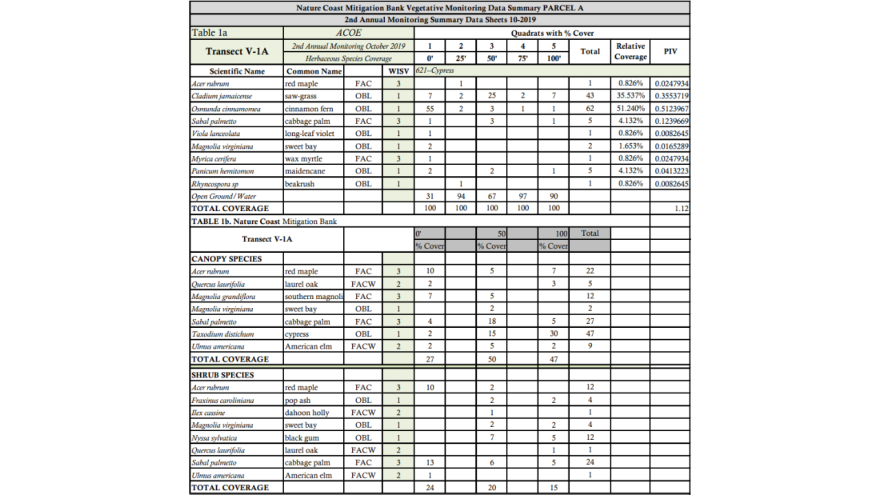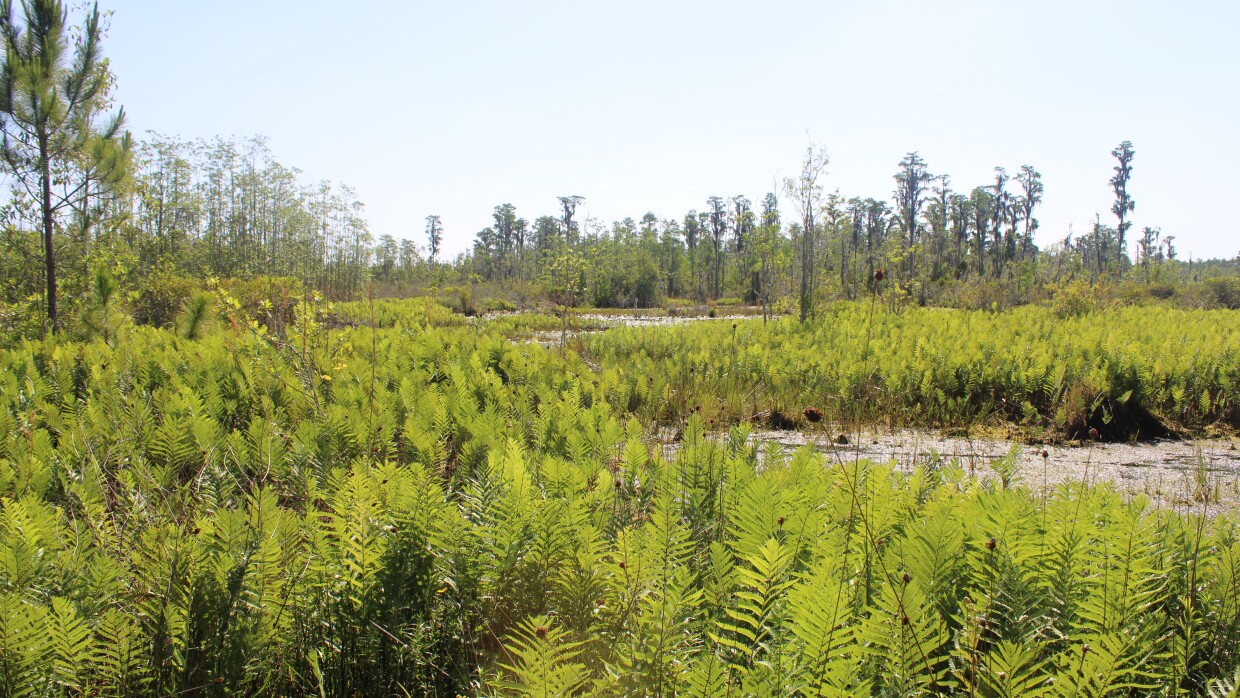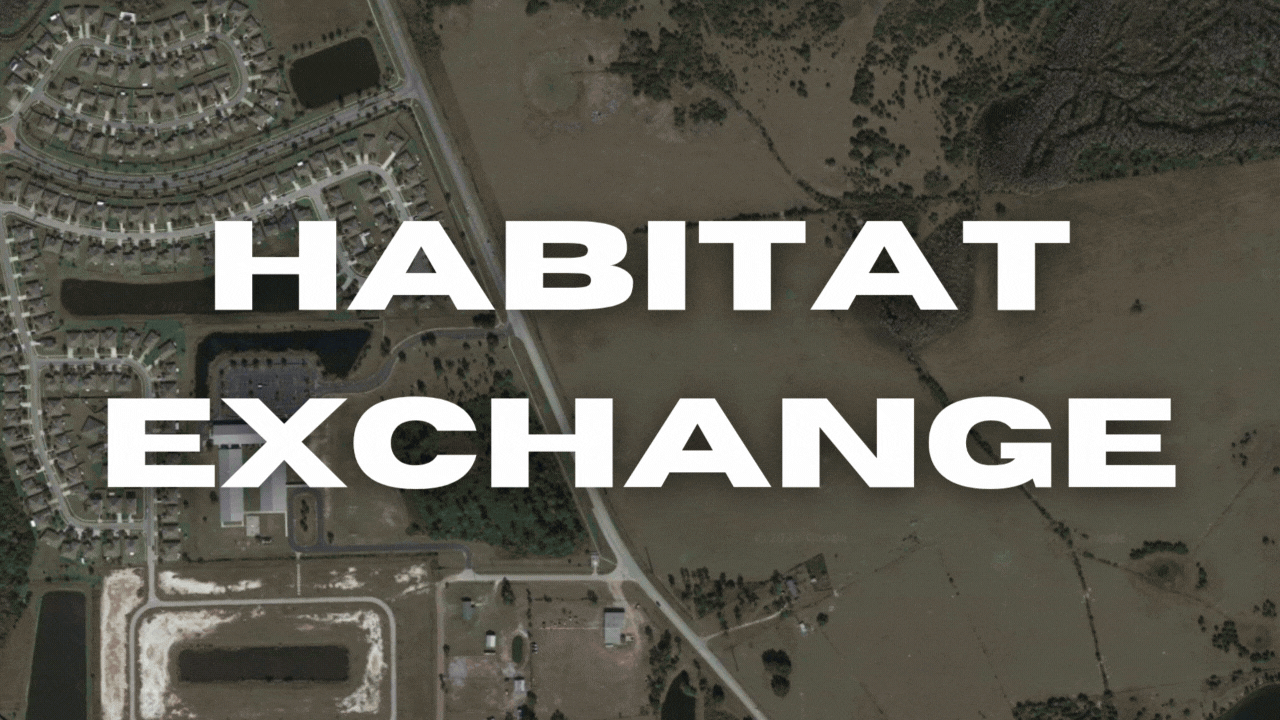Leafy green with tiny, red fruits, the Brazilian peppertree is a land manager’s enemy.
Parts of the plant can be toxic to birds and cause rashes in humans, but that’s not why it raises concern.
It’s because it grows like crazy.
The tree is the “poster child for invasive plants in Florida”, shading out native plants and recruiting non-native insects, according to researchers at the University of Florida.
Mitigation banks in central and south Florida describe “sudden invasions” and “dense infestations” of the plant, derailing restoration efforts and delaying credit release.
Land managers must remove invasive plants and promote the growth of native ones to meet mitigation success criteria. The commercial shortage of native plants and abundance of invasive ones makes that hard to do. Even when they meet their goals, mitigation banks replace less than half of the biodiversity that development destroys.
Farming plants that ‘don’t necessarily like being farmed’
Thousand-acre restoration projects require native plants, or seed, by the truckload.
Terry Zinn helps supply them through his wildflower seed farm in Alachua County.

“ Farming native seed is not like farming any other crop because there's no method on how to do it,” he said. “A lot of these plants don't necessarily like being farmed.”
Many cash crops, like corn or cotton, have been selectively bred or genetically modified to produce high yields and resist diseases. Native plants, by definition, have not.
Some have to be burned to produce seed, while others hardly seed at all, instead reproducing through underground shoots.
“It’s not uncommon that you might have to harvest ten acres to get one pound of seed,” Zinn said. Then comes drying, cleaning and testing, all of which add to the product’s final cost.
Land managers may pay between $100 to $1,000 per acre for seed alone, depending on the species or mix.
To meet mitigation banking requirements, land managers need to bring in a laundry list of native plants, many of them regionally specific.
“The assumption is that this is all being farmed and it's readily available, which is the furthest from the truth,” Zinn said. “At best you might find a few species on that list that somebody's bothered to try to farm.”
The lost species
Researchers at the University of Illinois Urbana-Champaign assessed how well mitigation banks replace natural wetland biodiversity in a modeling-based study.
Jeffrey Matthews and his team started with a database of around 2,000 natural wetlands in the Greater Chicago area. They used a computer model to simulate “destroying” some of those wetlands and purchasing the corresponding amount of credits from a mitigation bank to offset the impact.

Then, they compared the numbers of native plants in the original wetlands to the number in the bank. Matthews found, on average, banks had fewer than half the native plant species of the original wetlands.
Does that contradict mitigation banking’s goal of no net loss?
Depends on what you’re measuring, Matthews said.
“Even if we achieved no net loss of wetland acreage, this would not necessarily mean no net loss of wetland biodiversity or ecosystem services,” he wrote to WUFT News. “It is challenging, within a regulatory framework, to account for all of the values that wetlands provide.”
Steve Tillman, a former graduate student in Matthews’ group, further explored plant replacement in his master’s thesis.
He grouped species by their coefficient of conservatism: a number ranking how sensitive a plant is to human disturbance. Numbers range from zero for plants that can tolerate intense disturbance to ten for those that need pristine wilderness.
The numbers are a sort of proxy for conservation value. Destroying high-scoring plants in the wild means they’re unlikely to come back, while lower-scoring ones may persevere around pavement.
Tillman found banks overrepresented low-scoring plants. Plants that scored zero to two were four times more likely to be replaced through mitigation than those in the eight to ten range.
Exact replacement rates varied between each site, but Matthews expects the pattern to hold “regardless of region.”
“Species of the greatest conservation value are the most difficult to replace,” he summarized. “They are the most likely species to be lost as a result of compensatory mitigation.”
‘The next best thing’
The native plant losses came as no surprise to wetland ecologist Doug Spieles at Denison University.
“Some of those [replacement rates] were actually higher than I would've guessed,” said Spieles, who wasn’t affiliated with the study. Native plant requirements vary between and within banks depending on the type of ecosystem being restored, but common objectives in Florida are 80% or more of native groundcover and less than 2% of invasive species.

Mitigation banks replicate in years what nature did over centuries, he explained.
The bank is young, unstable and vulnerable to things like flooding or drought. With time, the ecosystem may sort itself out or be totally taken over by invasives, depending on how it’s managed.
“Practitioners have gotten much better at building these mitigation wetlands over the years,” Spieles said. “They’re not equivalent to the native systems, but they’re the next best thing.”



